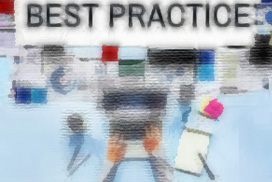Innovator’s View of Best Practices 3

PART THREE IN A SERIES – The 2nd of Three Survival Tools
Previously, we mentioned that both humans and organizations have three main survival tools. The first was, Be Relevant. The second is, Be Efficient (Do what has worked before).
After you determine if you are relevant, you need to create a plan to retain relevance or increase relevant, as the case may be. The most efficient way to go about this is to figure out what has worked before and do that – use past best practices.
If it works, this is a fast & easy solution. It generally works okay. The problem with using past best practices is that things change over time and those changes might affect how well past-best-practices will work in today’s situation. Still, it’s a good place to start.
Another efficient method of planning your relevance strategy is to determine why others are succeeding and copy them – use outside best practices.
This is not quite as effective because it’s a bit harder to dig out the pertinent information. Sometimes it costs money to collect the information (books, college, papers, consultants, etc.) and, if the information is really good, you have to jump on it because competition will build over time – more and more people will attempt to do the same thing. Additionally, there is a real danger that someone else’s best practice may not fit your organizational style and the change will not stick. All that effort and money wasted and morale down, too.
So here is the most important point about best practices: best practices are only best within a particular set of circumstances and timeframes.